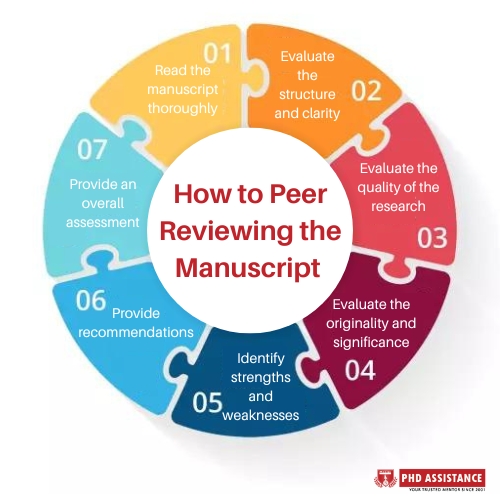How to Peer Reviewing the Manuscript
The reader and authors are interested in qualitative research, and few health sciences publications include peer reviewer guidelines. However, in describing excellent peer review, to define criteria for qualitative study quality evaluation, particularly the recent profusion of “checklists.” Few would argue that qualitative research necessitates different modes of evaluation than traditional quantitative health science, but efforts to develop standards have been hampered by a lack of agreement on what constitutes qualitative scientific rigour and the appropriateness of standardized criteria. On the one hand, conventional criteria are said to stifle the innovative and inventive use of qualitative methods, which are said to be critical to improving our knowledge of patients’ experiences and the social environment.
Introduction
Peer review is an important part of the academic publishing process, and it involves evaluating and providing feedback on a manuscript written by another researcher. Here are the general steps to follow when peer-reviewing a manuscript:

- Read the manuscript thoroughly: Read the manuscript carefully and make sure you understand the research question, methods, and results.
- Evaluate the structure and clarity: Check if the manuscript follows a logical structure, if the language is clear and concise, and if the information is presented in a way that is easy to understand.
- Evaluate the quality of the research: Evaluate the quality of the research design, data collection, and data analysis. Check if the data support the results and if the conclusions are justified.
- Evaluate the originality and significance: Check if the research is original and significant and if the findings contribute to the field.
- Identify strengths and weaknesses: Identify the strengths and weaknesses of the manuscript and provide constructive feedback to the authors.
- Provide recommendations: Provide recommendations for improvement, such as suggestions for additional analysis or clarification of results, and provide examples or references to support your recommendations.
- Provide an overall assessment: Provide an overall assessment of the manuscript and make a recommendation to the editor regarding acceptance or rejection.
It is important to approach peer review with an open mind and provide constructive feedback to help the authors improve their manuscripts. It is also important to be timely and professional in your feedback and to maintain confidentiality throughout the review process (Clark 2003).
Future Directions
The difficulties that peer reviewers encounter when evaluating qualitative publications will likely diminish as editors and the larger research communities come to dominate with what high-quality qualitative research is and how it should be published. This might include loosening word count limits in the health sciences literature or developing novel ways to deliver extensive qualitative procedures and data. It is not yet obvious what the optimal course of action is for paper submission and peer review. Misguided and ignorant peer review requests may jeopardize the quality of qualitative research. As a result, PhD Assistance should continue to look for rigorous and new techniques to evaluate and publish qualitative publications in the health sciences (Weinstein 2020)
PhD Assistance
PhD Assistance professionals are dedicated to offering superior paper peer review service in accordance with your specifications. We examine the items from your point of view and explain how you’re them—being compassionate while remaining truthful. Our specialists’ access to all essential sources and their knowledge of the requirement for journal manuscripts make it worthwhile to seek their assistance.
References
Clark, JOCALYN P. “15: How to peer review a qualitative manuscript.” Peer review in health sciences (2003): 219.
Weinstein, Robert. “How to write a manuscript for peer review.” Journal of Clinical Apheresis 35.4 (2020): 358-366.
 Previous Post
Previous Post Next Post
Next Post
